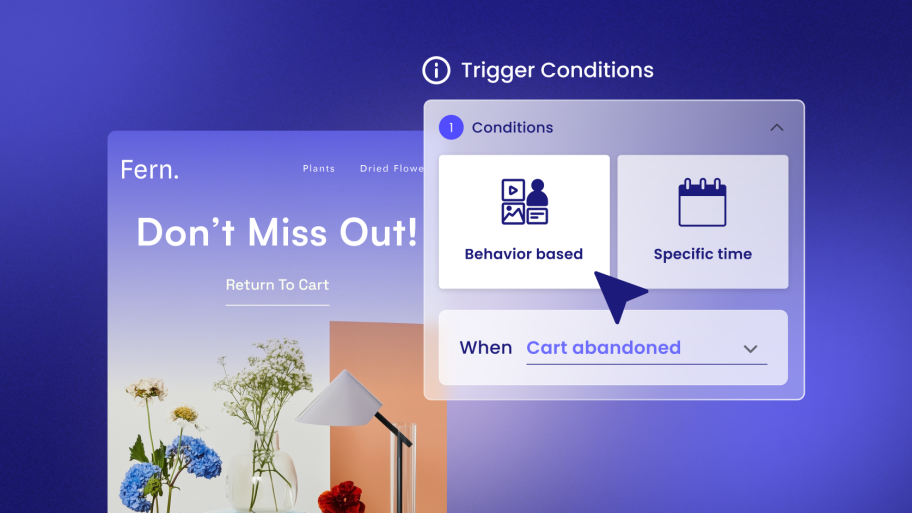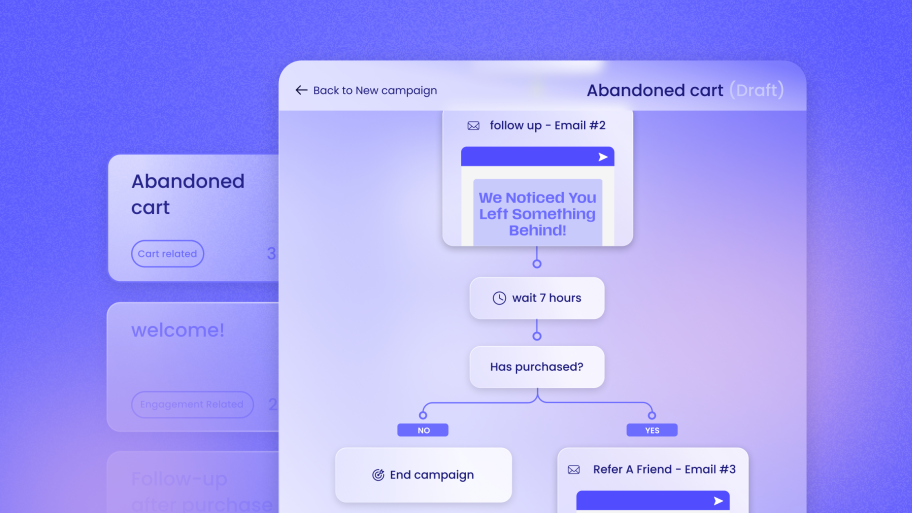This guide explores the world of direct mail, from its foundational principles to its modern applications. We’ll cover why it works, how to execute it effectively, and how it can be a powerful component of a holistic marketing strategy, especially for web creators and their clients. We will delve into how to build a successful campaign from the ground up, measure its impact, and amplify its reach by connecting it to the digital tools you already use.
The Enduring Appeal of Direct Mail
Have you ever wondered why you still get catalogs, postcards, and letters from brands in your physical mailbox? It’s because it works. In a world of overflowing inboxes and fleeting digital ads, a tangible piece of mail can cut through the noise.
The effectiveness of direct mail lies in its physical nature. Unlike a promotional email that can be deleted with a single click, a piece of mail has a physical presence in a person’s home. Research shows that direct mail boasts impressive engagement rates, with many recipients reading their mail the day it’s delivered. This physical interaction creates a more memorable experience and can lead to higher brand recall compared to digital advertisements.
Why Direct Mail Resonates with Consumers
Several factors contribute to the strong performance of direct mail:
- Tangibility and Trust: A physical mailer offers a sensory experience that digital media cannot replicate. Holding a well-designed postcard or brochure can make a brand feel more legitimate and trustworthy. In fact, a significant percentage of consumers, including millennials, find print advertisements more trustworthy than their digital counterparts.
- Reduced Digital Fatigue: Consumers are bombarded with digital messages daily, leading to what many call “digital fatigue.” A physical piece of mail provides a welcome break from screen time and can be a more personal and less intrusive way for a brand to communicate.
- High Engagement: People tend to interact with their physical mail more deliberately. Studies have shown that a large majority of promotional mail is opened and read, and it often remains in the home for an extended period, providing multiple opportunities for engagement.
- Personalization: Modern printing technology allows for a high degree of personalization, from simply adding a recipient’s name to tailoring offers based on their past purchase history. This level of customization makes the recipient feel valued and can significantly increase response rates.
Key Statistics Underscoring Direct Mail’s Effectiveness
The numbers speak for themselves when it comes to the impact of direct mail:
- Response Rates: Direct mail consistently achieves higher response rates than many digital channels. While email marketing response rates are often a fraction of a percent, direct mail can generate responses that are several times higher.
- Return on Investment (ROI): For many businesses, direct mail delivers a strong ROI. It compares favorably with other marketing channels like paid search and online display advertising.
- Influence on Purchasing Decisions: A significant portion of consumers have made a purchase as a direct result of receiving mail from a brand. This is true across various demographics, including younger generations who are surprisingly receptive to physical mail.
In summary, the tangible and personal nature of direct mail makes it a powerful tool for capturing attention and building trust. When used strategically, it can drive significant results and provide a strong return on investment.
Building Your Direct Mail Campaign: A Step-by-Step Guide
Creating a successful direct mail campaign involves more than just printing a flyer and sending it out. It requires careful planning, a deep understanding of your audience, and a compelling message. For web creators looking to offer this service to their clients, a structured approach is key.
Step 1: Defining Your Objectives and Audience
Before you design anything, you need to know what you want to achieve and who you’re trying to reach. Clear objectives will guide every decision you make throughout the campaign.
Setting Clear Goals
What is the primary purpose of your direct mail campaign? Are you trying to:
- Generate leads?
- Drive traffic to a website or physical store?
- Promote a new product or service?
- Increase sales for a specific item?
- Build brand awareness?
- Nurture existing customer relationships?
Your goals should be specific, measurable, achievable, relevant, and time-bound (SMART). For example, a goal could be to “increase online sales of our new product line by 15% within 60 days of the mailer being sent.”
Identifying and Segmenting Your Target Audience
Understanding your audience is crucial for creating a message that resonates. Start by defining your ideal customer. Consider demographics like age, location, and income, as well as psychographics like interests and lifestyle.
Once you have a clear picture of your audience, you can segment your mailing list for more targeted messaging. For instance, you could create different versions of your mailer for new prospects versus loyal customers. For an eCommerce store, segmentation could be based on past purchase history, allowing you to send highly relevant product recommendations.
Step 2: Crafting a Compelling Message and Design
With your objectives and audience defined, it’s time to focus on the creative aspects of your campaign. The design and copy of your mailer will determine whether it grabs attention or ends up in the recycling bin.
Best Practices for Direct Mail Design
An effective direct mail piece is visually appealing and easy to digest. Here are some design best practices to follow:
- Use an Eye-Catching Headline: Your headline should be short, impactful, and focus on a key benefit for the customer.
- Incorporate High-Quality Visuals: Use professional photos or graphics that support your message and align with your brand’s aesthetic.
- Keep the Message Clear and Concise: Avoid cluttering your design with too much text. Use white space to make the content more readable.
- Choose Legible Fonts: Ensure your typography is easy to read. Use a combination of font sizes to create a visual hierarchy.
- Have a Clear Call-to-Action (CTA): Tell the recipient exactly what you want them to do next, whether it’s visiting a website, using a coupon code, or scanning a QR code.
Writing Persuasive Copy
The words you use are just as important as the design. Your copy should be persuasive and customer-focused.
- Focus on Benefits, Not Features: Instead of just listing what your product does, explain how it makes the customer’s life better.
- Personalize the Message: Whenever possible, address the recipient by name. Personalized mailings have been shown to significantly increase response rates.
- Include an Irresistible Offer: A compelling offer, such as a discount or a free gift, can be a powerful motivator. Creating a sense of urgency with an expiration date can also encourage immediate action.
- Add Social Proof: Including customer testimonials or positive reviews can build trust and credibility.
Step 3: Integrating Digital Elements for a Modern Approach
The most effective direct mail campaigns don’t exist in a vacuum. By integrating digital elements, you can bridge the gap between the physical and online worlds, creating a seamless experience for your audience and making your campaign’s performance easier to track.
Using QR Codes and Personalized URLs (PURLs)
- QR Codes: These scannable codes provide a quick and easy way for recipients to access your website, a specific landing page, or a promotional video using their smartphone. This simple tool can significantly increase engagement with your digital platforms.
- Personalized URLs (PURLs): A PURL is a unique web address created for a specific recipient (e.g., YourBrand.com/John-Smith). This link directs them to a personalized landing page with a tailored message or offer. PURLs are a powerful tool for creating a one-to-one marketing experience and tracking individual responses.
Connecting to Email and SMS Marketing
Direct mail can work hand-in-hand with your email and SMS marketing efforts. For web creators who manage these channels for their clients, this integration is a natural fit. A platform that consolidates email, SMS, and automation, like Send by Elementor, simplifies the management of these multi-channel campaigns.

For example, you could:
- Send an email to announce that a special offer is “in the mail.”
- Follow up a direct mail piece with an SMS message containing a reminder to use their discount code.
- Use the data collected from direct mail responses (like PURL visits) to trigger automated email workflows.
These coordinated touchpoints reinforce your message and increase the likelihood of conversion.
Step 4: Production, Mailing, and Cost Considerations
The final step in building your campaign is production and mailing. The costs associated with direct mail can vary widely based on several factors.
Understanding the Costs
The total cost of a direct mail campaign is influenced by:
- Design and Copywriting: Whether you do this in-house or hire a professional will significantly impact the cost.
- Printing: The quantity, size, paper quality, and complexity of your mailer will affect printing costs.
- Mailing List: You can build your own list or purchase one. The cost of a purchased list depends on its size and how targeted it is.
- Postage: Postage rates vary based on the size, weight, and class of your mail. Bulk mail discounts can help reduce this expense.
On average, a direct mail piece can cost anywhere from a few cents to several dollars per recipient. It’s essential to budget carefully and consider the potential ROI.
Choosing a Mailing Partner
You can handle the printing and mailing yourself, or you can work with a full-service direct mail company. Many modern direct mail platforms offer automation features, allowing you to trigger mailings based on specific customer actions, similar to how you would set up an automated email campaign.
In conclusion, building a successful direct mail campaign is a methodical process. By carefully defining your goals, understanding your audience, crafting a compelling message, and integrating digital elements, you can create a campaign that delivers tangible results for your clients.
Marrying Direct Mail with Digital: Creating a Cohesive Customer Journey
In today’s marketing landscape, the most successful strategies are often multi-channel. Integrating direct mail with your digital marketing efforts creates a more robust and effective way to engage with customers. This approach allows you to meet your audience where they are, reinforcing your message across different platforms and creating a seamless customer journey.
As a web creator, you are uniquely positioned to orchestrate these multi-channel campaigns for your clients. By leveraging a comprehensive communication toolkit, you can manage these various touchpoints from a central hub. Send by Elementor, being a WordPress-native solution, provides the foundation for this by consolidating email, SMS, and marketing automation directly within the familiar WordPress dashboard. This simplifies the process of creating integrated campaigns that combine the tangible impact of direct mail with the immediacy of digital communication.
The Power of a Multi-Channel Approach
Combining direct mail with digital channels like email and social media can lead to a significant lift in response rates. When a customer sees your brand in their mailbox, their inbox, and their social media feed, it creates a powerful sense of familiarity and trust. This multi-pronged approach ensures your message is heard, even if one channel is missed.
Here’s why this integrated strategy is so effective:
- Increased Touchpoints: It can take multiple interactions before a customer is ready to make a purchase. A multi-channel campaign provides these necessary touchpoints in a variety of formats.
- Reinforced Messaging: Seeing a consistent message across different platforms reinforces brand recognition and recall.
- Catering to Different Preferences: Some customers may prefer email, while others are more receptive to direct mail. A multi-channel approach allows you to cater to these individual preferences.
Practical Ways to Integrate Direct Mail and Digital Marketing
Let’s explore some practical strategies for creating a cohesive campaign that spans both the physical and digital realms.
Driving Online Traffic from a Physical Mailer
Your direct mail piece can act as a bridge to your online properties. The goal is to make it as easy as possible for the recipient to move from the physical mailer to your website or a specific landing page.
- Use a Clear Call-to-Action (CTA): Your CTA should explicitly direct the user to a digital channel. For example, “Visit our website to see the full collection” or “Scan the QR code to watch a product demo.”
- Create Dedicated Landing Pages: Instead of sending traffic to your homepage, create a dedicated landing page that aligns with the message of your mailer. This provides a more focused and relevant experience for the user.
- Incentivize the Transition: Offer an exclusive online discount or a special piece of content to those who visit your site from the mailer. This gives them a compelling reason to make the jump from physical to digital.
Automating Workflows with a Unified Platform
This is where a tool built for WordPress integration shines. While Send by Elementor is designed for email and SMS marketing, its core principles of automation and segmentation can be conceptually applied to a broader multi-channel strategy that includes direct mail.
Imagine this workflow, managed from a central dashboard:
- Trigger: A customer abandons their shopping cart on a WooCommerce store.
- Email Automation: An automated email is sent a few hours later, reminding them of the items in their cart. This is a standard feature you can manage with a tool like Send.
- Direct Mail Automation: If the customer doesn’t complete their purchase after a set period, a signal could be sent to a direct mail automation service to send a postcard with a special discount.
- SMS Follow-up: A few days after the postcard is scheduled to arrive, an SMS message can be sent as a final reminder. This is another capability that can be handled within an integrated toolkit.
This type of automated, multi-step campaign ensures you’re reaching the customer through multiple channels at the most opportune times. The key is having a system that can manage audience segmentation and trigger actions based on customer behavior.
Using Data from All Channels to Personalize the Experience
A truly integrated campaign uses data from all channels to create a more personalized experience.
- Data from your website and email marketing can inform your direct mail targeting. For example, you can send mailers to customers who have shown interest in a particular product category.
- Data from your direct mail campaign (such as QR code scans or PURL visits) can be used to segment your audience for future email and SMS messages.
By creating a feedback loop between your physical and digital marketing efforts, you can continuously refine your strategy and deliver more relevant and effective messages.
In summary, the future of direct mail lies in its integration with digital marketing. By creating a cohesive customer journey that spans multiple channels, you can amplify the impact of your campaigns and drive better results. For web creators, offering this kind of integrated service, simplified by a WordPress-native toolkit, represents a significant opportunity to provide more value to clients and build stronger, long-term relationships.
Measuring the Success of Your Direct Mail Campaign
One of the most common misconceptions about direct mail is that it’s difficult to track. However, with the right strategies and tools, you can effectively measure the return on investment (ROI) of your direct mail campaigns and gain valuable insights to optimize future efforts. For web creators, demonstrating this trackability is essential for proving the value of direct mail to clients.
Key Metrics to Track
To gauge the performance of your campaign, you need to monitor several key performance indicators (KPIs).
- Response Rate: This is the percentage of recipients who took a desired action after receiving your mailer. It’s calculated by dividing the number of responses by the total number of mail pieces sent.
- Conversion Rate: This metric takes it a step further and measures the percentage of responders who completed the ultimate goal, such as making a purchase. You calculate this by dividing the number of conversions by the number of responses.
- Cost Per Acquisition (CPA): This is the total cost of the campaign divided by the number of new customers acquired. It tells you how much you’re spending to get each new customer through your direct mail efforts.
- Return on Investment (ROI): This is the ultimate measure of your campaign’s profitability. It’s calculated by subtracting the total campaign cost from the total revenue generated, then dividing that number by the campaign cost.
Practical Methods for Tracking Responses
The key to accurately measuring your direct mail campaign is to create a clear and trackable path for recipients to follow. Here are some effective methods for doing so:
Using Trackable Digital Tools
This is where the integration of digital and direct mail becomes crucial for measurement.
- Unique QR Codes: By generating a unique QR code for your direct mail campaign, you can track exactly how many people scanned it to visit your website.
- Personalized URLs (PURLs) or Campaign-Specific URLs: As mentioned earlier, PURLs are unique to each recipient, making them an excellent tool for tracking individual responses. Alternatively, you can create a general, easy-to-remember URL that is exclusive to the direct mail campaign (e.g., YourBrand.com/SpecialOffer). Website analytics can then show you how much traffic this specific URL generated.
- Custom Coupon Codes: Provide a unique discount code on your mailer. By tracking how many times this code is used at checkout, you can directly attribute sales to your direct mail campaign.
Incorporating Trackable Phone Numbers
If your call-to-action involves a phone call, use a dedicated, trackable phone number for your direct mail campaign. Call tracking services can provide detailed analytics, including the number of calls received, the duration of each call, and even call recordings for quality assurance.
Analyzing the Data and Optimizing Future Campaigns
Once your campaign is complete, it’s time to analyze the data you’ve collected. This is where a platform with robust analytics capabilities becomes invaluable. For web creators using a system like Send by Elementor, the ability to see real-time analytics for email and SMS campaigns within the WordPress dashboard highlights the importance of having clear, accessible data. While direct mail tracking might happen through a separate service, the principle of using data to prove ROI remains the same.
When analyzing your results, ask yourself these questions:
- Which mailer design or message generated the highest response rate?
- Which audience segment was the most responsive?
- What was the most common action taken by recipients?
- How did the campaign perform against the initial objectives?
The insights you gain from this analysis are crucial for optimizing future campaigns. You can test different headlines, offers, and designs to see what resonates most with your audience. This iterative process of testing and measuring is the key to improving your direct mail performance over time.
In summary, tracking the success of a direct mail campaign is not only possible but essential. By using a combination of digital tools and trackable response mechanisms, you can gather the data needed to calculate your ROI and make informed decisions for future marketing efforts. For web creators, mastering this aspect of direct mail allows you to demonstrate clear value to your clients and solidify your role as a strategic partner in their growth.
Direct Mail in the Modern Marketing Mix
Direct mail has proven its resilience and effectiveness in a digital-heavy world. It offers a unique, tangible way to connect with customers, cutting through the digital clutter and creating a memorable brand experience. For web creators and their clients, particularly those in the eCommerce space, direct mail is not just a standalone tactic but a powerful component of a comprehensive, multi-channel marketing strategy.
The journey we’ve taken through the world of direct mail highlights several key takeaways:
- It’s a trusted and engaging channel: Consumers, weary of digital overload, often welcome the personal touch of a physical mailer. This trust and engagement translate into higher response rates and a solid return on investment.
- Integration is key: The true power of modern direct mail is unlocked when it’s seamlessly integrated with digital channels. By using tools like QR codes and PURLs, and by coordinating efforts with email and SMS marketing, you can create a cohesive customer journey that amplifies your message and drives action.
- Measurement is achievable: With the right tracking mechanisms in place, you can effectively measure the performance of your direct mail campaigns, proving their value and gathering insights for continuous improvement.
For web creators using WordPress, the path to offering these integrated marketing services is clearer than ever. A WordPress-native communication toolkit like Send by Elementor provides a centralized platform for managing key digital channels, simplifying the complexities of multi-channel campaigns. By starting with a strong foundation in email and SMS automation, you can then expand your services to include strategically integrated direct mail, offering your clients a truly holistic marketing solution.
The goal is to move beyond one-off projects and build long-term, value-driven partnerships with your clients. By helping them navigate the complexities of modern marketing and delivering measurable results, you position yourself as an indispensable asset to their business. Embracing the potential of direct mail within a broader digital strategy is a significant step in that direction.




